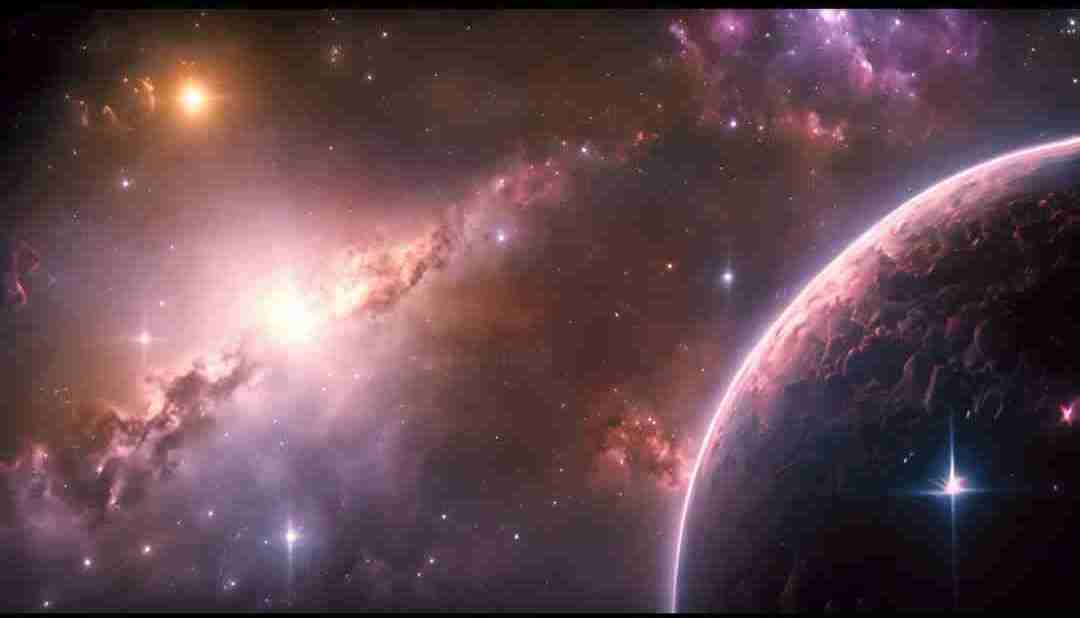🌌 Expelled Star Gives Astronomers a Rare Glimpse Into the Heart of the Milky Way
Scientists have found a hypervelocity star speeding away from the center of our galaxy. This rare discovery is helping astronomers study the supermassive black hole at the Milky Way’s core and the nuclear star cluster (NSC) surrounding it.
🔭 Why Is the Galactic Center So Hard to Study?
The center of the Milky Way is hidden behind thick clouds of dust. This dust absorbs most of the light, making it difficult for telescopes to see what’s inside.
At the heart of the galaxy lies a supermassive black hole, surrounded by:
- Hundreds of stars very close to the black hole
- A larger disc of stars further out
- An even bigger star group called the nuclear star cluster (NSC)
Until now, scientists have only caught brief glimpses of these stars because of the dust blocking their view.
🚀 The Discovery of a Speeding Star
Kohei Hattori and his team from the National Astronomical Observatory of Japan made an exciting discovery while analyzing data from the Gaia space telescope.
They found a star moving away from the galactic center at 500 kilometers per second! Stars that move this fast are called hypervelocity stars.
How Did This Star Get So Fast?
- These stars gain speed when they pass close to a supermassive black hole.
- The black hole’s immense gravity can slingshot them away at extreme speeds.
- Scientists believe this particular star was once part of the NSC but was ejected due to interactions with the black hole.
🔬 Studying the Star’s Chemical Composition
For the first time, astronomers were able to analyze the chemical makeup of a hypervelocity star from the galactic center.
Using the Magellan Clay Telescope in Chile, Hattori’s team examined the light from the star and found that its composition matches the stars in the NSC. This strongly suggests it originated from the Milky Way’s core.
Why Is This Important?
- Before, scientists had to point telescopes directly at the galactic center, but dust blocked much of the light.
- Now, by studying stars that have been ejected, they can learn about the center of the galaxy without looking directly at it.
- This allows researchers to explore the history, formation, and evolution of the NSC in a completely new way.
🧐 Can We Be Sure the Star Came from the Galactic Center?
Not everyone is fully convinced yet.
Albert Zijlstra from the University of Manchester, UK, points out that:
- The star clearly came from another part of the galaxy.
- Its orbit suggests it could have been ejected from the galactic center.
- But there is still no definite proof of its exact origin.
Further studies will help confirm its birthplace.
🌠 More Discoveries Using Infrared Telescopes
Meanwhile, another team led by Nils Ryde at Lund University in Sweden used an infrared instrument on the Gemini South telescope in Chile to study the galactic center.
They identified 19 different elements, including:
✅ Fluorine
✅ Sodium
✅ Aluminium
Many of these elements had never been detected in the NSC before.
📜 What Does This Mean for Astronomy?
🔹 Just two weeks ago, astronomers had very limited chemical data about the Milky Way’s center.
🔹 These new discoveries have greatly expanded our understanding.
🔹 Scientists can now better explain how stars in the NSC formed.
This research marks a major step forward in unlocking the secrets of our galaxy’s core. More hypervelocity stars may reveal even deeper mysteries in the future! 🚀✨







